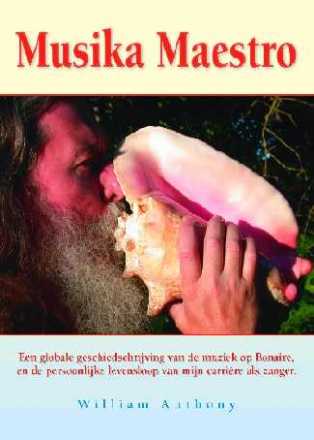Many of you may never have heard before about Bonaire, haven’t been there yet and also do not know where it is located. In order to understand the background of my songs I will give a short introduction to the history of the island where I was born; my island.
Bonaire is not really far away from Venezuela and “was” a Dutch colony.
As I mentioned in the story behind the song Mi Deseo, after the slavery abolition in 1863, most slaves have received a plot of land. They cultivated the ground with sorghum and maize and celebrated the harvest festival, the Simadan, singing Remailo in freedom. But 5 years later, on september, 1st 1868, is the island of Bonaire (Government plantation including Klein Bonaire) was divided into seven large lots and in the context of “empowerment” on charge of the Governor of the colony of Curaçao (and dependencies, which under Aruba and Bonaire) very large parts thereof has been sold in public to the highest bidders. So a large part of Bonaire was privately owned in lots. Just to mention the Plantation Bolivia, Planation Washington, Planattion Slagbaai, the salt pans etcetera etcetera and as the seventh and the final lot Klein Bonaire, all this “subject to the coastal strip who remained at general interest “publicly available”; the current dive sites. So Bonaire is ceased to be a large government plantation. The reason for this was that it has become clear that an official business without slaves was too cumbersome and also too expensive for the maintenance of the island. The song Bye Bye Mairi on my cd-single Grandi Grandi Grandi is dediacted to one of those dive sites. Years ago, Klein Bonaire was owned by Harry Belafonte. He was so inspired by it that he wrote the song “Oh Island in the sun”. Was he singing Jamaica Farewell on his Banana Boat sailing to Klein Bonaire? Around the turn of the century, he sold it to the island administration of Bonaire. Grupo Piedra di Bonaire gave with the CD album “Ban Kuid’e” (1997) a helping hand to get it done. But Mathilda took his money and run to Venezuela. Also Angelina was there with her concertina. Anyhow, Klein Bonaire is now a protected landscape area since 2001.
After being a Dutch colony Bonaire became since 1954 together with the other islands, Curaçao, Aruba, Saba, Statia and Sint Maarten, the Netherlands Antilles. An autonomous Caribbean country within the Kingdom of the Netherlands.
In his joy for the end of the colonial status and enthusiasm for the obtained autonomy in 1954, after eight years of negotiations, Boeis Haile composed a number of songs which expresses the joy to finally have its (the Netherlands Antilles) own national anthem and a flag. The song “Himno di Bandera” is one of them. He also had a great admiration for the island of Bonaire and composed the waltz Bonaire. This song is on Music from Bonaire produced in 1998 by me and has till now for many people on the island a special meaning.
This country, the Netherlands Antilles, is on October 10th, 2010 (10-10-10) dissolved, all of its constituent islands remain part of the kingdom under a different legal status and the problems began.
In short, it comes to the point that in 2004 in preparation for the dessolving of the Netherlands Antilles a referendum is held. The population has chosen for “direct ties” with The Netherlands but the interpretation would be determined in a further following referendum. It has not come so far because the government of The Netherlands decided to annex Bonaire without a self-determination referendum as enshrined in the resolutions 1541 and 1514 of the United Nations. The government assumed that “direct ties” was meant integration and found that it was not desirable to wait on the outcome of the referendum. Very odd that the Government of Netherlands “direct ties” would have misunderstood because in 2009 with the acknowledge of the government they was working on preparations to organise a referendum before 10-10-10. Unfortunately, this has not happened. The custom Dutch law was introduced and since then, there is confusion and it goes bad on the island.
The inhabitants are afraid of losing their cultural identity and the character of the island Bonaire.
The songs on my albums are for the preservation and promotion of the intangible cultural heritage of the Netherlands Antilles.
For more history visit: http://globedivers.org/2013/01/09/bonaire-history-women-of-bonaire-salt-trade-governors-and-famine-juan-mateo-and-pedro-ortiz-1634-1648/#comment-3161
There is a book published about that issue known as “De Tragiek van Bonaire”; The Tragedy of Bonaire.
Music from Bonaire has been made possible through the generous support of the Bonairian business center.
Supported by the Prins Bernhard Cultuurfonds Netherlands Antilles and Aruba I have produced the album “Kunuku” in 2011.
And now let the music play. Download Music from Bonaire at the various download portals worldwide.
Y ahora que sigue la fiesta con Music from Bonaire. Descargalo ahora en AmazonMP3 (USA), iTunes y varios otros mas mundialmente.


Is any of this story true?